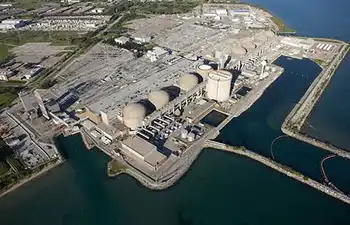Lawsuit targets Homer City power plant
By Indiana Gazette
CSA Z463 Electrical Maintenance
Our customized live online or in‑person group training can be delivered to your staff at your location.

- Live Online
- 6 hours Instructor-led
- Group Training Available
Law requires that notice be given at least 60 days before the suit is filed.
“The owners of Homer City Station have ignored their legal obligations while their power plant pollutes our skies and our lungs with over 100,000 tons of emissions each year,” Cuomo said in a press release. “We will hold the owners of the Homer City power plant accountable for breaking clean air laws and for endangering the health and environment of New Yorkers.”
The Pennsylvania Department of Environmental Protection is joining the lawsuit, the attorney general's office said.
According to the press release, the Homer City plant violated the Clean Air Act when it failed to install state-of-the-art pollution controls after several modifications between 1982 and 1996 increased pollution emissions. Cuomo alleges the plant emits more than 100,000 tons of sulfur dioxide, nitrogen oxides and particulate matter into the air each year, which is blown into New York, contributing to smog and soot pollution.
The pollutants, he charges, are directly linked to increased asthma attacks, lung diseases and other health problems as well as the acid rain that damages lakes, forests and wildlife in the Adirondack and Catskill regions of New York.
The intent to sue names a consortium of eight limited liability companies who own the plant, its operator, EME Homer City Generation LP, and former owners including Chestnut Ridge Energy Co., Mission Energy Westside Inc., Pennsylvania Electric Co., and New York State Electric and Gas Corp. It seeks to require the companies to fully comply with the Clean Air Act by installing the pollution controls.
No one from the state DEP or the Homer City plant could be reached for comment this morning.
This is not the first time the power plant has faced legal action based on environmental concerns. In July 2007, it agreed to pay a $200,000 fine and modify a wastewater treatment system after the DEP claimed the plant violated the state's Clean Streams Law by discharging more selenium into Blacklick Creek than the wastewater discharge permit allowed.
Selenium is a trace element in Pennsylvania coal and is an essential nutrient, but overexposure causes health problems. The plant's flue gas desulphurization equipment cleans pollutants out of the smoke in the stacks, including sulfur dioxide and selenium, but removing selenium from the wastewater generated in the process is more difficult.
The plant spent more than $1.6 million between June 2004 and March 2007 trying to get selenium out of the wastewater.
Last October, the DEP approved the plant's harms/benefit analysis concerning a plan to expand a residual waste landfill by 76 acres.











